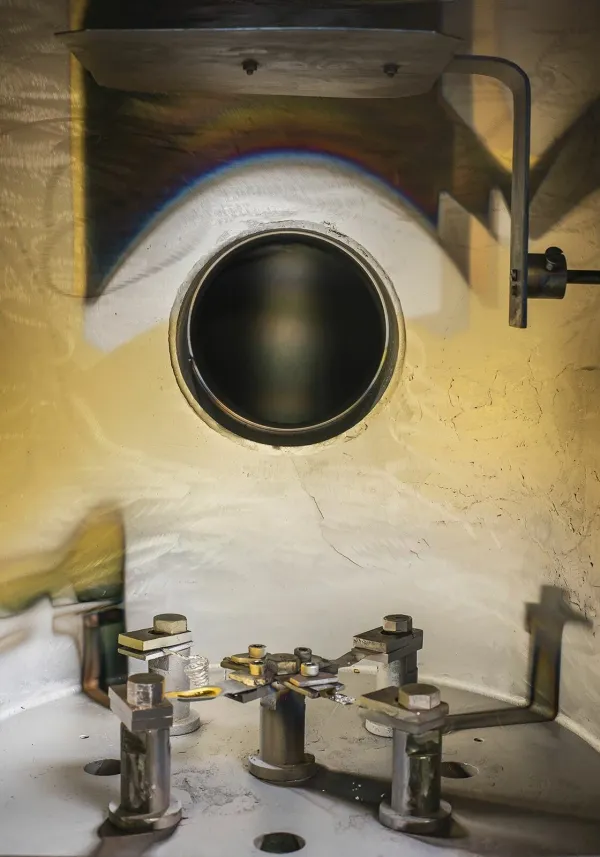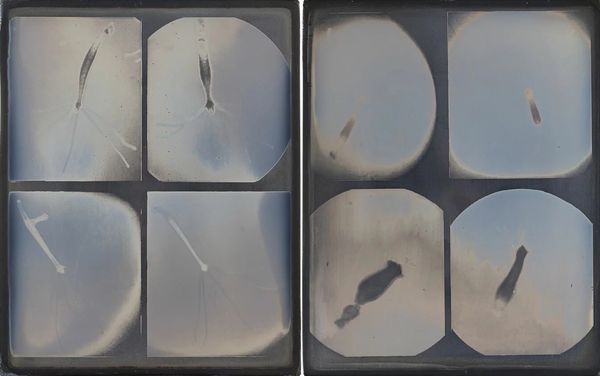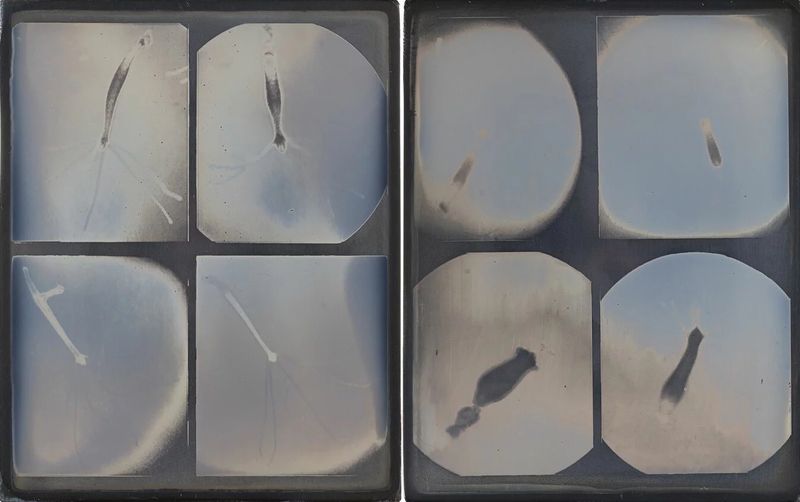There's Plenty Of Room At The Bottom by Giorgio Di Noto at ICCD
-
Opens28 Nov 2024
-
Ends17 Jan 2025
-
Link
- Location Rome, Italy
Associazione On Image presents artist Giorgio Di Noto's project at the ICCD - Istituto Centrale per il Catalogo e la Documentazione in Rome, with the support of MiC and SIAE as part of the Per Chi Crea program.
Overview
Giorgio Di Noto presents visual research on the relationship between photography and nanotechnology, an investigation of light and matter, the visible and the invisible, through a series of experimental works. The Roman artist, thanks to the fundamental collaboration with Carlotta Valente and the technical support of Joaquin Paredes, has thus sought to represent, from both a conceptual and a material point of view, a visual investigation into the possible connections between a science that studies an invisible world and a technology that apparently represents the visible world. Using the oldest, most precious and somewhat dangerous photographic procedure in history, the daguerreotype, compared with one of the most contemporary and technologically advanced scientific applications.
There's Plenty Of Room At The Bottom is the title of a 1959 speech by physicist Richard Feynman and is considered the first scientific reference to the potential of nanotechnology: “What would happen if we could arrange atoms one by one as we wish?”
Starting from this inspiration, Giorgio Di Noto worked in two important Italian Institutes: the CNR Nanotechnology Institute in Lecce and the Elettra Sincrotrone in Trieste. Here he delved into the world of nanoscience through photography, with the intention of investigating this possible and unexpected link. In fact, nanotechnology has a special relationship with photography: the daguerreotype, the first photographic process in history, has in fact been identified as one of the first (unwitting) examples of nanotechnology. For this reason, those plates, which in the past were often called “mirrors with a memory,” return iridescent images, simultaneously negative and positive, real mirrors on which monochromatic photographs appear but with various shades of color due precisely to the metal nanoparticles on the surface, as the text in the exhibition by Vittorio Aita, a researcher in nanotechnology and plasmonics at King's College London, points out.
Other examples of nanotechnology in history and in nature, such as lotus leaves or the Cup of Lycurgus from the Roman period, have become a further level of research that has led Di Noto to expand subjects and techniques that, presented here for the first time, enter into dialogue with daguerreotypes and other photographic prints.
The works created will be exhibited at the ICCD - Istituto Centrale per il Catalogo e la Documentazione in Rome, with which Di Noto has collaborated as part of his research on contemporary daguerreotype production and conservation practices. The exhibition will also feature a video made by Vincenzo Farenza, who recorded several interviews and followed all stages of production.





